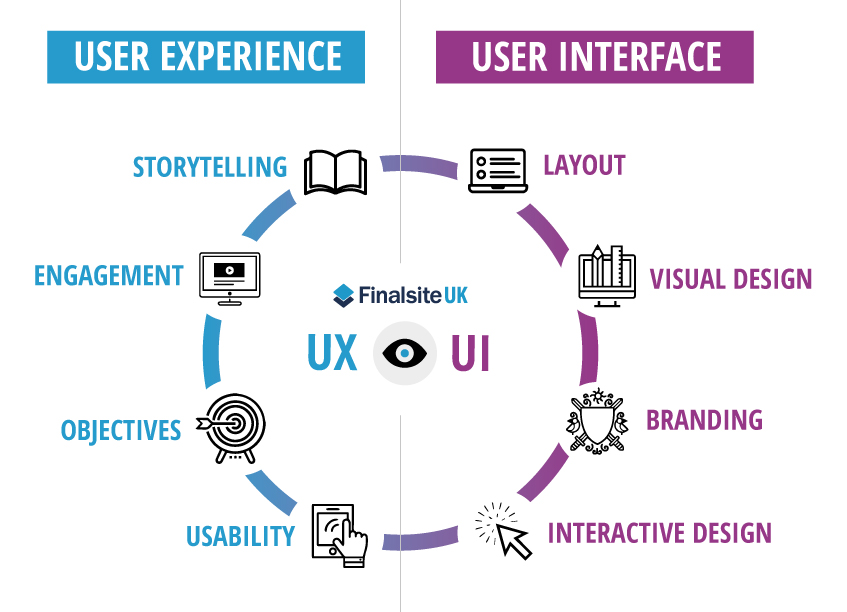What is UX Experience?
Understanding UX Experience User Experience (UX) refers to how users interact with a website. It encompasses various elements, such as functionality, speed, visual aesthetics, and content. The ultimate goal of UX experience design is to deliver a seamless, enjoyable, and fulfilling experience for users, which enhances retention and conversion rates.Why UX Experience Matters in Website Development
First Impressions Count in UX Experience
The initial moments of a visitor’s time on your website are crucial. A thoughtfully crafted user experience helps users quickly grasp the site’s value and navigate it with ease. By making a strong first impression, you can motivate users to stay longer and explore further.Enhanced Usability through UX Experience
A poorly designed user experience can cause confusion and frustration, leading to higher bounce rates. Improving usability through intuitive navigation, well-defined calls to action, and responsive design makes it easier for users to find what they need and engage with your content.Increased Engagement with UX Experience
Captivating UX experience design holds users’ attention and motivates them to interact with your content. Interactive elements, eye-catching visuals, and clear text contribute to a more enjoyable experience, resulting in longer browsing sessions and repeat visits.Higher Conversion Rates with UX Experience
Your UX experience design significantly influences whether visitors take desired actions, such as making a purchase or filling out a contact form. By creating a smooth user journey, providing clear navigation, and using compelling calls to action, you can improve your site’s conversion rates.SEO Benefits of UX Experience
Search engines prioritize user experience when ranking websites. Factors like page load speed, mobile-friendliness, and low bounce rates directly impact rankings. A website with an excellent UX experience is more likely to rank higher in search results, boosting organic traffic.Building Brand Perception through UX Experience
A positive user experience leaves a lasting impression on your audience. When users navigate your website effortlessly, they associate positive emotions with your brand. This builds trust, loyalty, and word-of-mouth recommendations.Key Elements of Effective UX Experience Design
Responsive Design for Better UX Experience
With the rise of mobile internet usage, having a responsive design is essential. Ensure your website functions seamlessly across all devices, including desktops, tablets, and smartphones. Responsive designs adapt layouts and content to different screen sizes for a consistent user experience.Clear Navigation for Optimal UX Experience
Users should easily find the information they’re looking for. Create an intuitive and organized navigation system with clearly labeled menus and a search function to help users locate content quickly.Fast Load Times for Better UX Experience
Page load speed plays a significant role in user experience. Slow-loading pages can frustrate users and increase bounce rates. Optimize images, leverage browser caching, and reduce HTTP requests to improve loading times.Visual Appeal and UX Experience
A website’s visual design greatly influences user perception. Use harmonious color palettes, legible fonts, and high-resolution images to create a visually appealing and professional appearance.Quality Content and Its Role in UX Experience
Provide valuable and well-structured content. Use clear headings, concise paragraphs, and engaging visuals to help users quickly understand the information they need.Accessibility in UX Experience
Ensure your website is accessible to everyone, including individuals with disabilities. Incorporate features like alt text for images, keyboard navigation, and compatibility with screen readers to create an inclusive experience.How to Improve UX Experience on Your Website
Conduct User Research for a Better UX Experience
Understanding your audience is key to creating an excellent user experience. Collect data on user needs, preferences, and behavior through surveys, interviews, and analytics.Create User Personas to Enhance UX Experience
Develop detailed profiles of your typical website users. This helps tailor your design and content to meet their specific preferences and needs.Perform Usability Testing for Improving UX Experience
Regular usability testing helps identify and resolve design issues. Testing with real users provides valuable feedback for continuous improvement.Analyze and Iterate to Improve UX Experience
UX experience design is an ongoing process. Continuously analyze user behavior and feedback to refine your website and keep up with evolving user expectations.Conclusion Prioritizing UX experience design is essential for building a successful website. By focusing on elements like responsive design, clear navigation, fast load times, and accessibility, you can create a positive user experience that drives engagement, conversions, and loyalty. Remember, improving UX experience is an iterative process that requires ongoing research, testing, and adaptation.
For more details follow us on Facebook | Instagram | linkedIn
